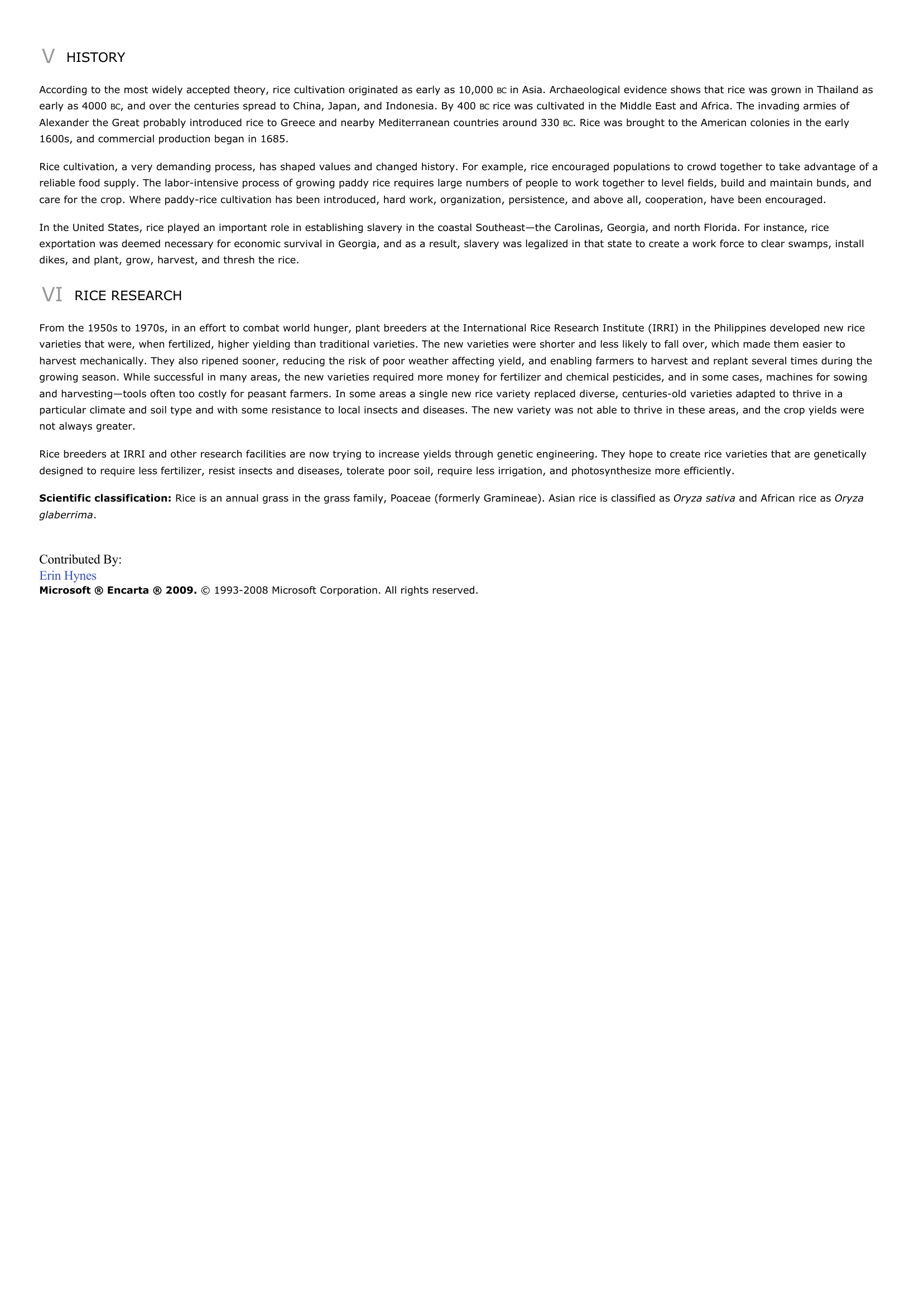Rice - biology.
Publié le 11/05/2013
Extrait du document
«
V HISTORY
According to the most widely accepted theory, rice cultivation originated as early as 10,000 BC in Asia.
Archaeological evidence shows that rice was grown in Thailand as early as 4000 BC, and over the centuries spread to China, Japan, and Indonesia.
By 400 BC rice was cultivated in the Middle East and Africa.
The invading armies of Alexander the Great probably introduced rice to Greece and nearby Mediterranean countries around 330 BC.
Rice was brought to the American colonies in the early 1600s, and commercial production began in 1685.
Rice cultivation, a very demanding process, has shaped values and changed history.
For example, rice encouraged populations to crowd together to take advantage of areliable food supply.
The labor-intensive process of growing paddy rice requires large numbers of people to work together to level fields, build and maintain bunds, andcare for the crop.
Where paddy-rice cultivation has been introduced, hard work, organization, persistence, and above all, cooperation, have been encouraged.
In the United States, rice played an important role in establishing slavery in the coastal Southeast—the Carolinas, Georgia, and north Florida.
For instance, riceexportation was deemed necessary for economic survival in Georgia, and as a result, slavery was legalized in that state to create a work force to clear swamps, installdikes, and plant, grow, harvest, and thresh the rice.
VI RICE RESEARCH
From the 1950s to 1970s, in an effort to combat world hunger, plant breeders at the International Rice Research Institute (IRRI) in the Philippines developed new ricevarieties that were, when fertilized, higher yielding than traditional varieties.
The new varieties were shorter and less likely to fall over, which made them easier toharvest mechanically.
They also ripened sooner, reducing the risk of poor weather affecting yield, and enabling farmers to harvest and replant several times during thegrowing season.
While successful in many areas, the new varieties required more money for fertilizer and chemical pesticides, and in some cases, machines for sowingand harvesting—tools often too costly for peasant farmers.
In some areas a single new rice variety replaced diverse, centuries-old varieties adapted to thrive in aparticular climate and soil type and with some resistance to local insects and diseases.
The new variety was not able to thrive in these areas, and the crop yields werenot always greater.
Rice breeders at IRRI and other research facilities are now trying to increase yields through genetic engineering.
They hope to create rice varieties that are geneticallydesigned to require less fertilizer, resist insects and diseases, tolerate poor soil, require less irrigation, and photosynthesize more efficiently.
Scientific classification: Rice is an annual grass in the grass family, Poaceae (formerly Gramineae).
Asian rice is classified as Oryza sativa and African rice as Oryza glaberrima .
Contributed By:Erin HynesMicrosoft ® Encarta ® 2009. © 1993-2008 Microsoft Corporation.
All rights reserved..
»
↓↓↓ APERÇU DU DOCUMENT ↓↓↓
Liens utiles
- Rice, Condoleezza - biographie.
- Burroughs Edgar Rice, 1875-1950, né à Chicago, écrivain américain.
- Rice Wins MVP.
- Jerry Rice.
- Alligator - biology.







